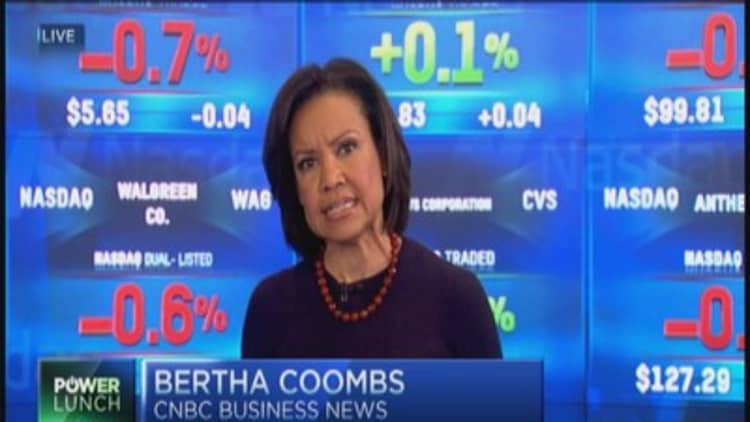
Only a half dozen states in the South are reporting high levels of flu activity, but from early indications, the Centers for Disease Control and Prevention is worried that this year's flu season will be severe.
"From what we know about the viruses we are seeing, we are concerned that it may be a severe year this year, particularly for people in the older age group as well as for young children," said Dr. Angela Campbell, a medical officer in the CDC's respiratory disease branch.
The concern is prompted by the type of flu strain, H3N2, that's most prevalent this year. It's the same strain that dominated during three of the most severe flu seasons since 2002, including the winter of 2012-2013. The trouble is this year's flu vaccine—developed last February—is not well-matched to combat that strain of influenza.
Read MoreVaccination laggards vex parents
"That may mean that the vaccine won't protect as well against severe outcomes such as hospitalizations or deaths," said Campbell, while cautioning that Americans should not skip the flu shot. "Vaccination is the best first line of defense."
Two years ago, the severe outbreak resulted in unexpectedly high demand for flu shots late into the winter, and at times supplies were tight. The CDC said there are ample doses of flu shots to handle strong demand this year, and it strongly urged vaccination for the elderly and young children who are most vulnerable to influenza.
For the Genentech division of drugmaker Roche, which produces the flu treatment Tamiflu, meeting demand was a problem during the 2013 flu season. Some areas saw shortages of the children's liquid formulation of the drug. The company said this year, it's prepared.
"We have produced sufficient supply of all Tamiflu formulations for a severe flu season and are currently working with distributors and national retail pharmacies to provide consistent access to Tamiflu," said Genentech spokeswoman Austine Graff.
According to CNBC data partner Kensho, the health-care sector tends to outperform the overall market during flu season. For the last 11 years, the Health Care ETF XLV has gained as average of 4.2 percent between October through March, compared with 3.2 percent for the .
Read MoreCDC: Current vaccines might not stop the flu
During the winter of 2013, drugstore chains were among the big flu season gainers. For CVS Health and Walgreen, administering flu shots has become a profitable part of their store business, said Evercore ISI analyst Ross Muken. Two years ago, they saw a big boost on the top and bottom line, he said.
"It obviously improves traffic, so you bring people into the box—but it's also a pretty good source of profit as the vaccines have pretty decent margins on them," Muken said. "If you think about drugstores growing into low- to mid-single digits, this kind of got you into mid- to high-single digits."
For hospitals, a bad flu season can mean more admissions, but that doesn't always result in stronger quarterly profits.
"Hospitals typically see volumes pick up in a heavy flu season, but the bottom line impact is negligible as flu treatment is a low revenue, low margin business," said Chris Rigg, health-care services analyst at Susquehanna. "Nevertheless, investors like to see strong volume, and a strong flu season helps."
Read MoreJob health insurance costs up
Rigg will be keeping a closer eye on insurers if this year's flu season proves severe. For Medicaid plan providers, in particular, a jump in medical costs would be a problem, he said. In 2013, Centene, a smaller Medicaid provider, saw its profits fall because of unexpectedly high costs.
"Above normal utilization in physician offices and hospitals increased medical costs, which given the lower margin profile in the Medicaid segment, disproportionately impacted EPS," said Rigg.
Flu season typically peaks in late February, so the biggest impact on earnings is usually seen in the first quarter.


